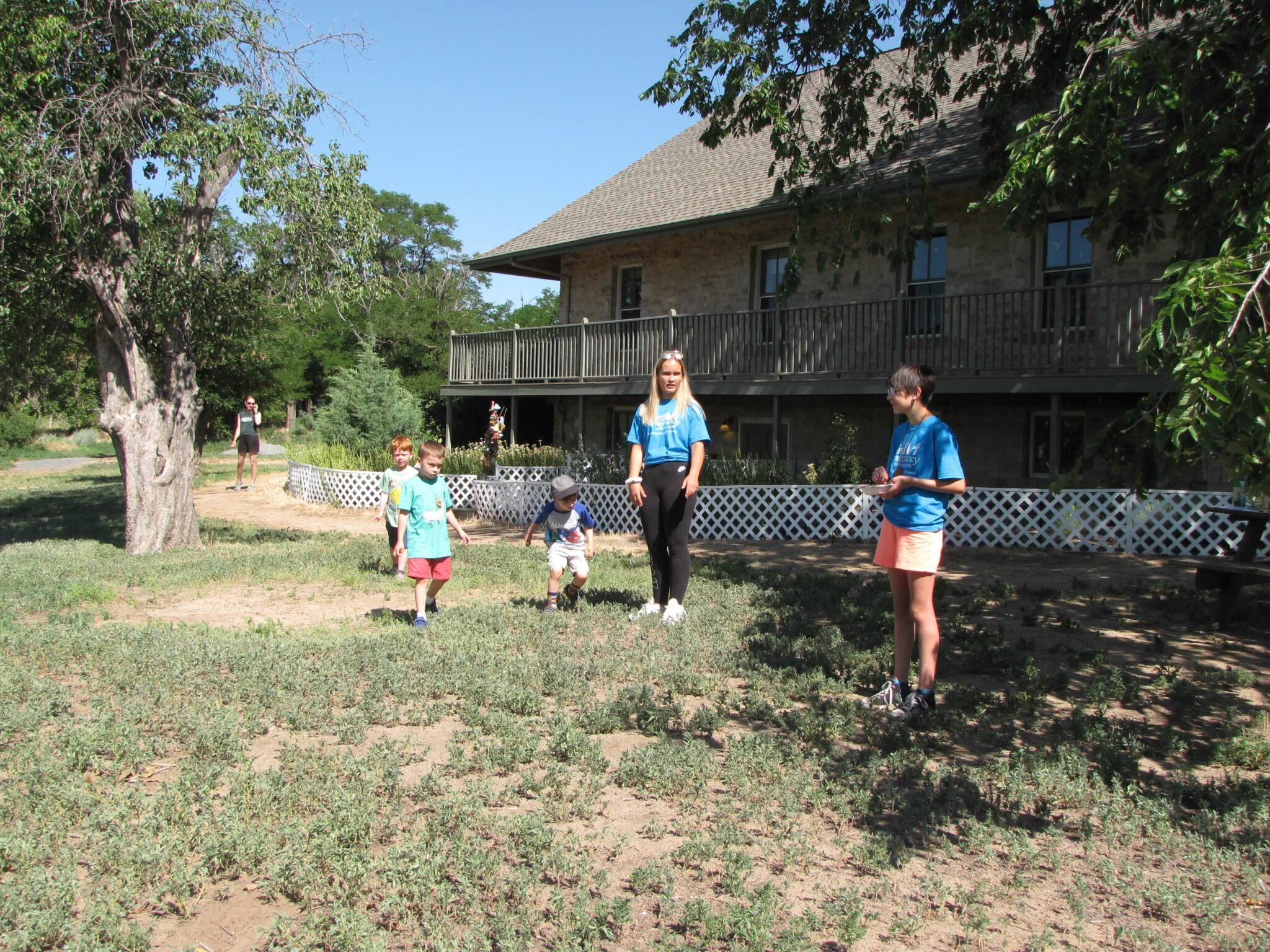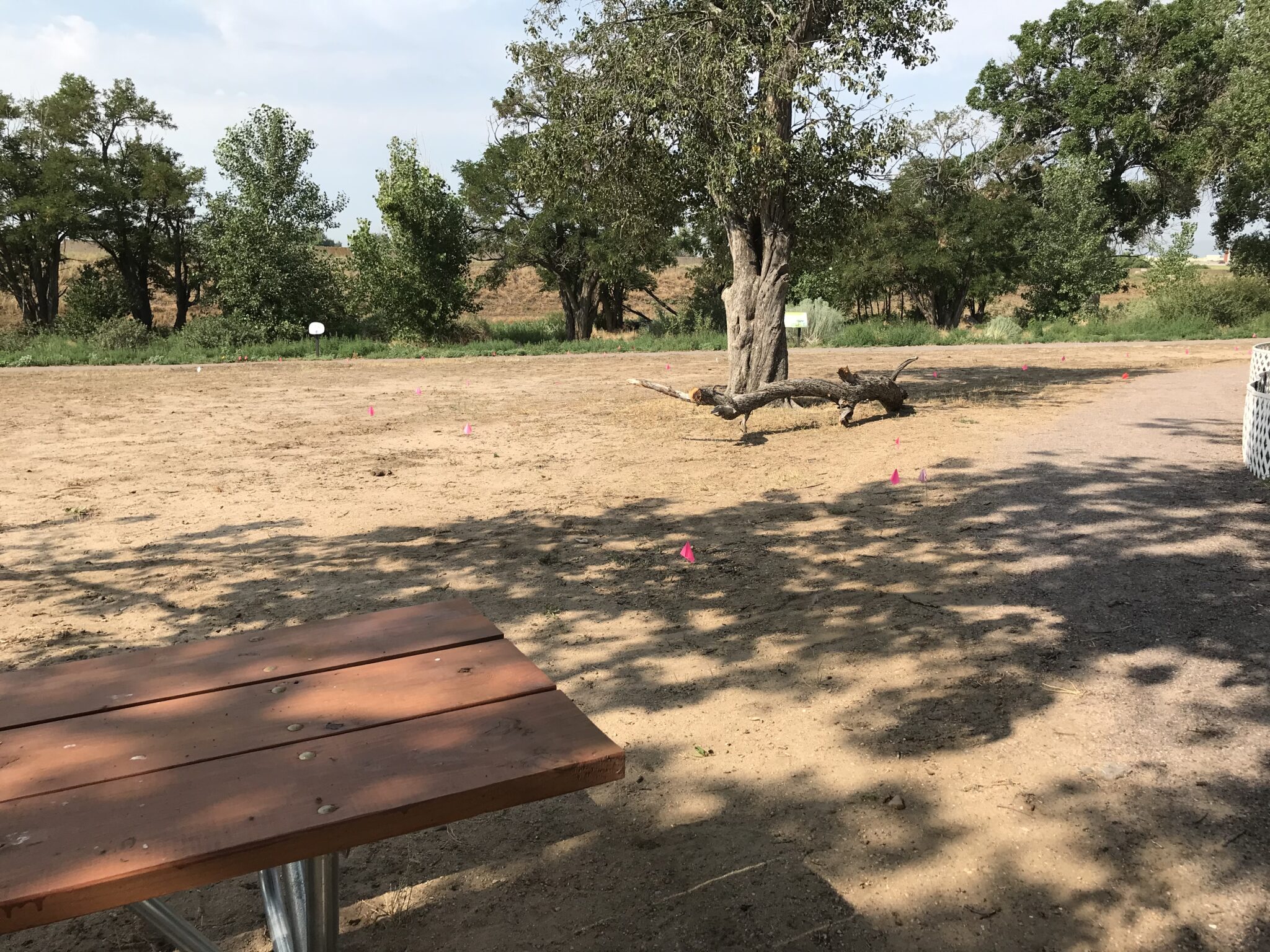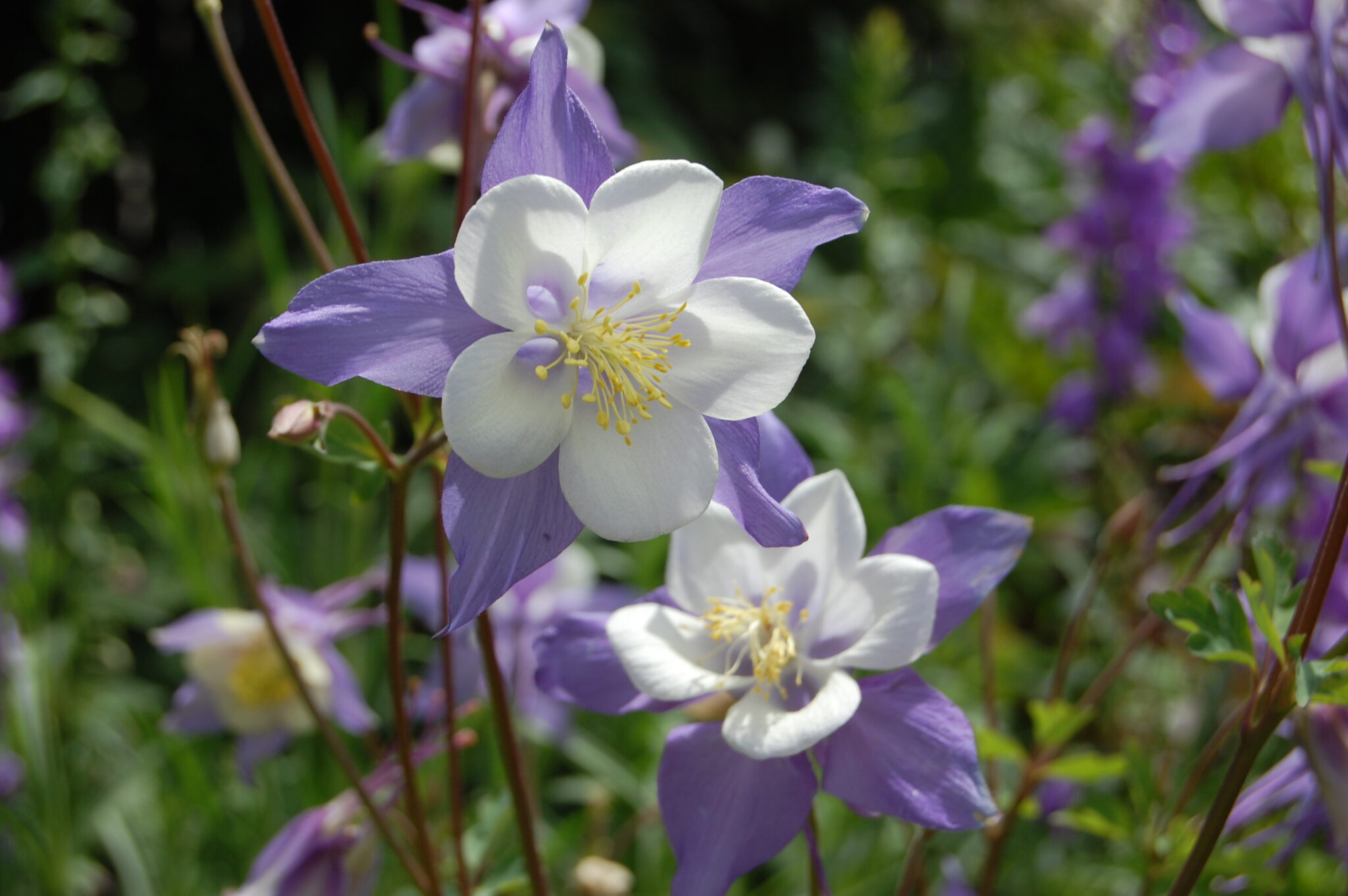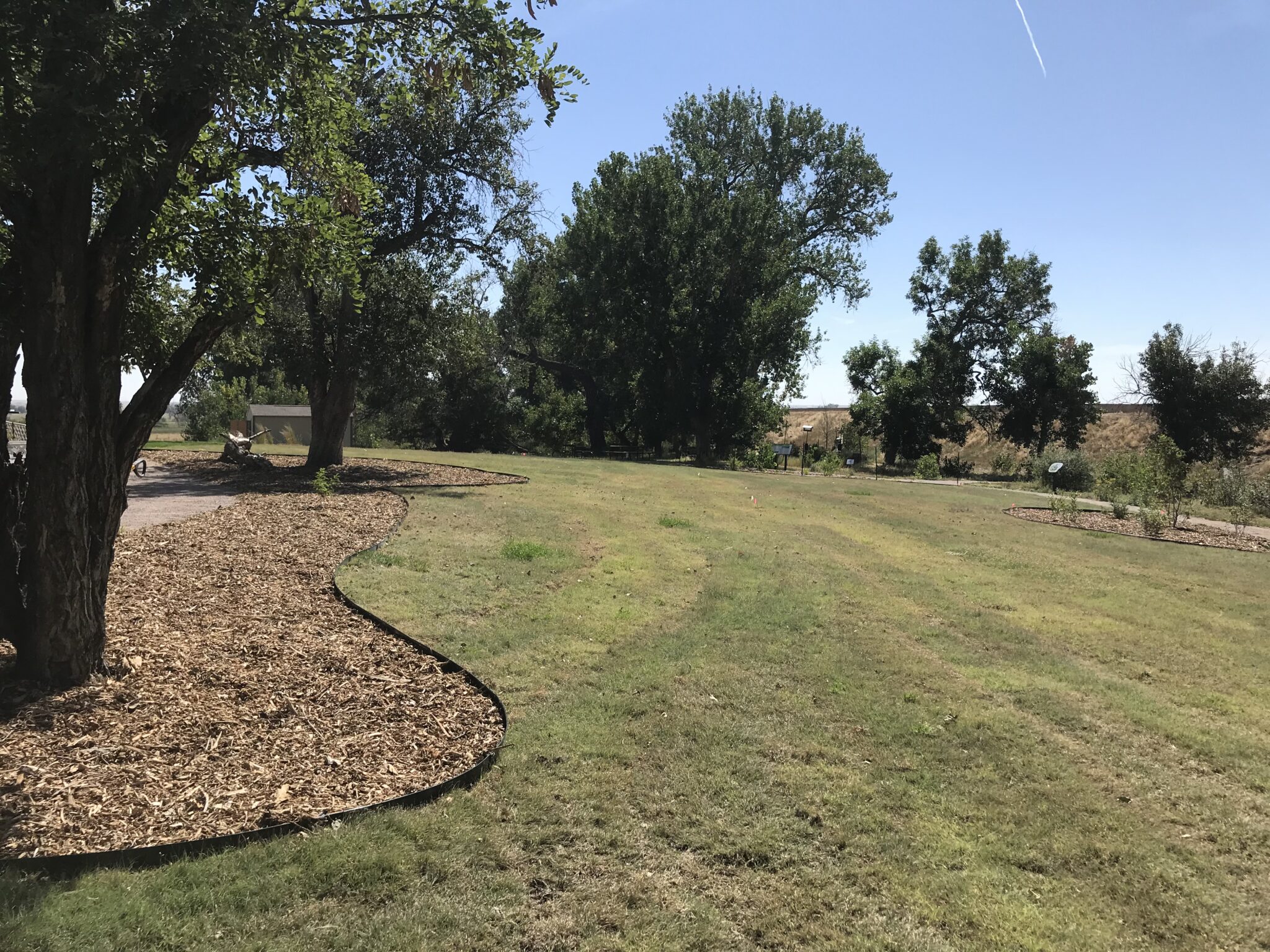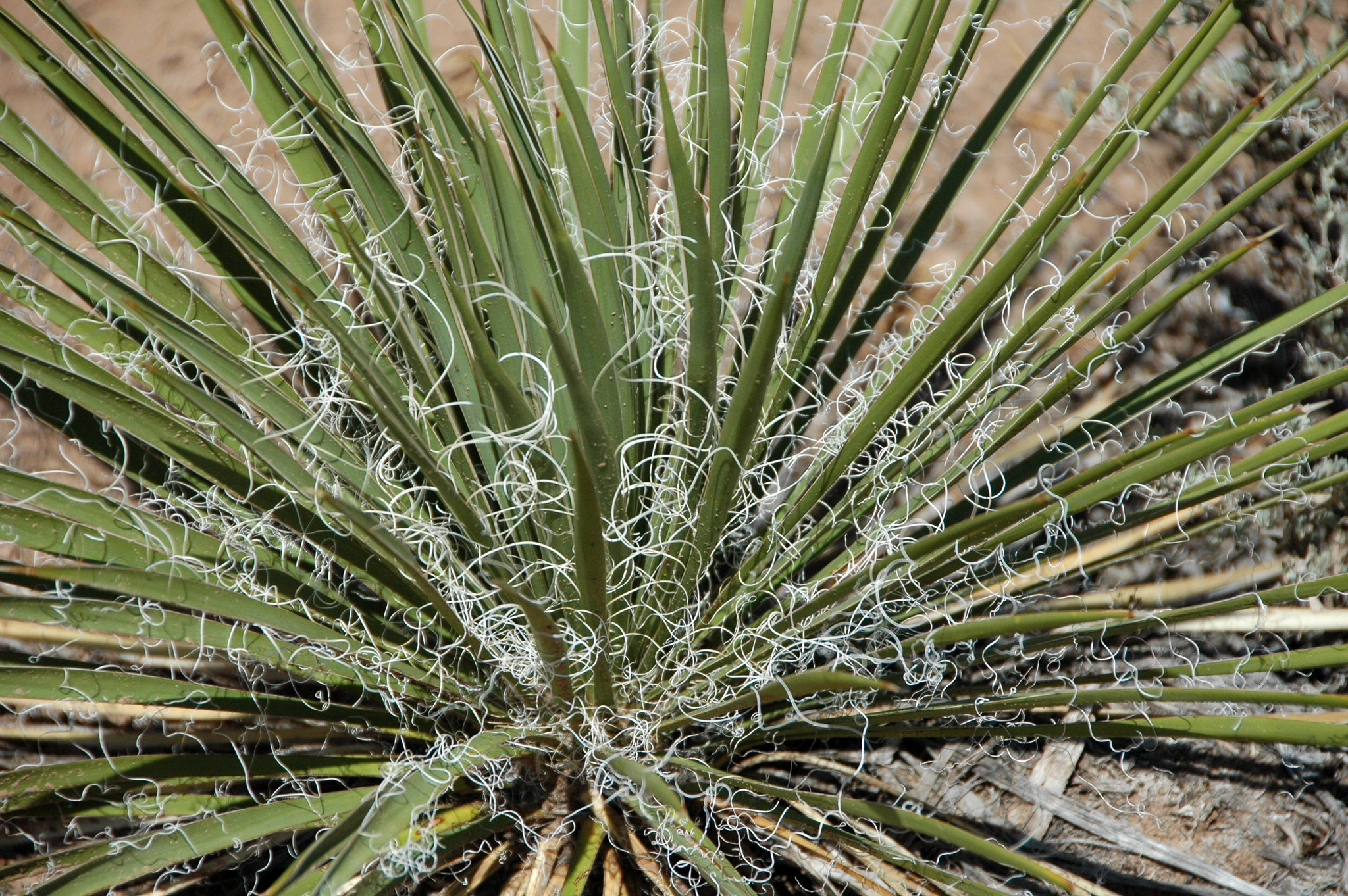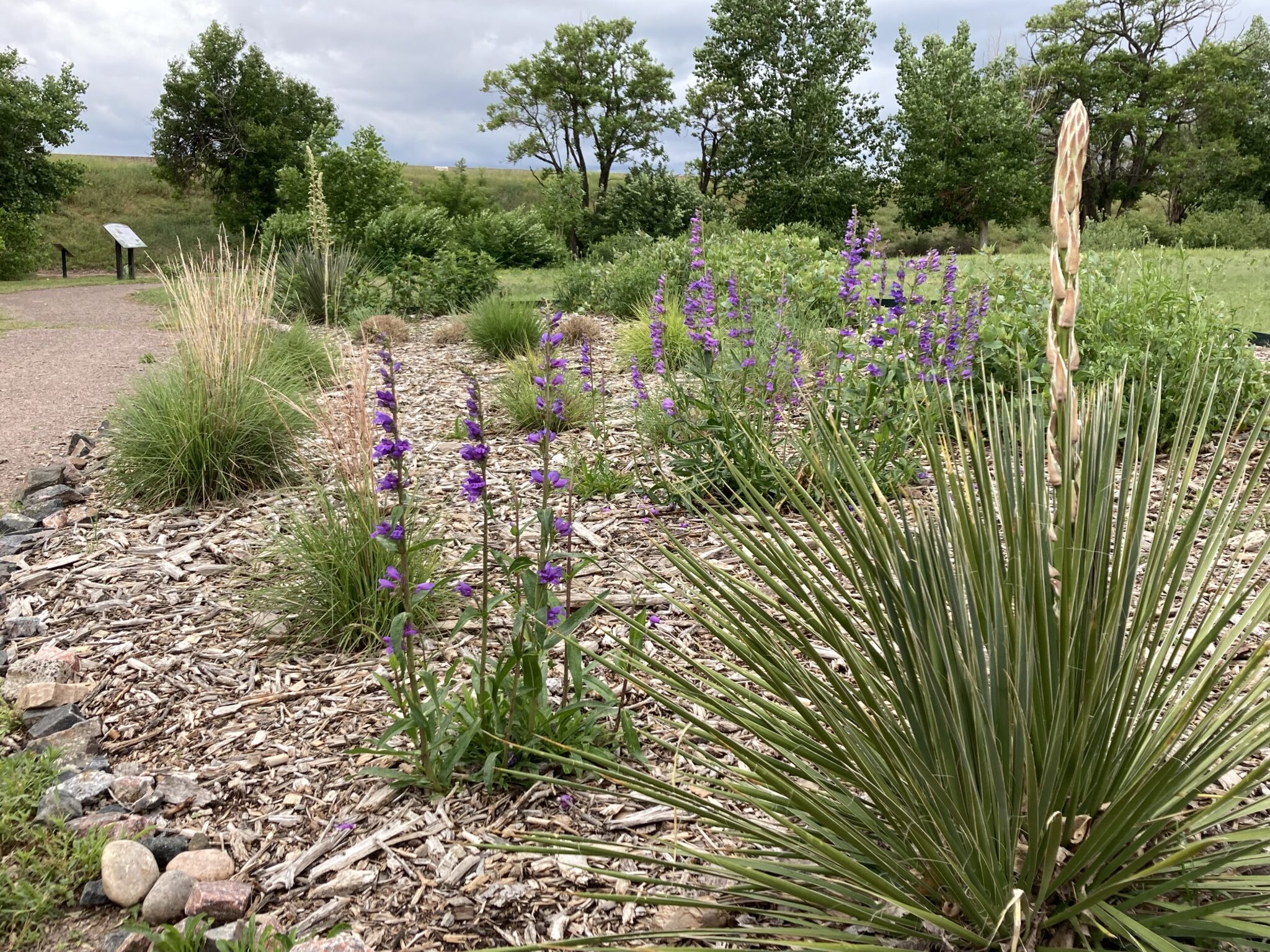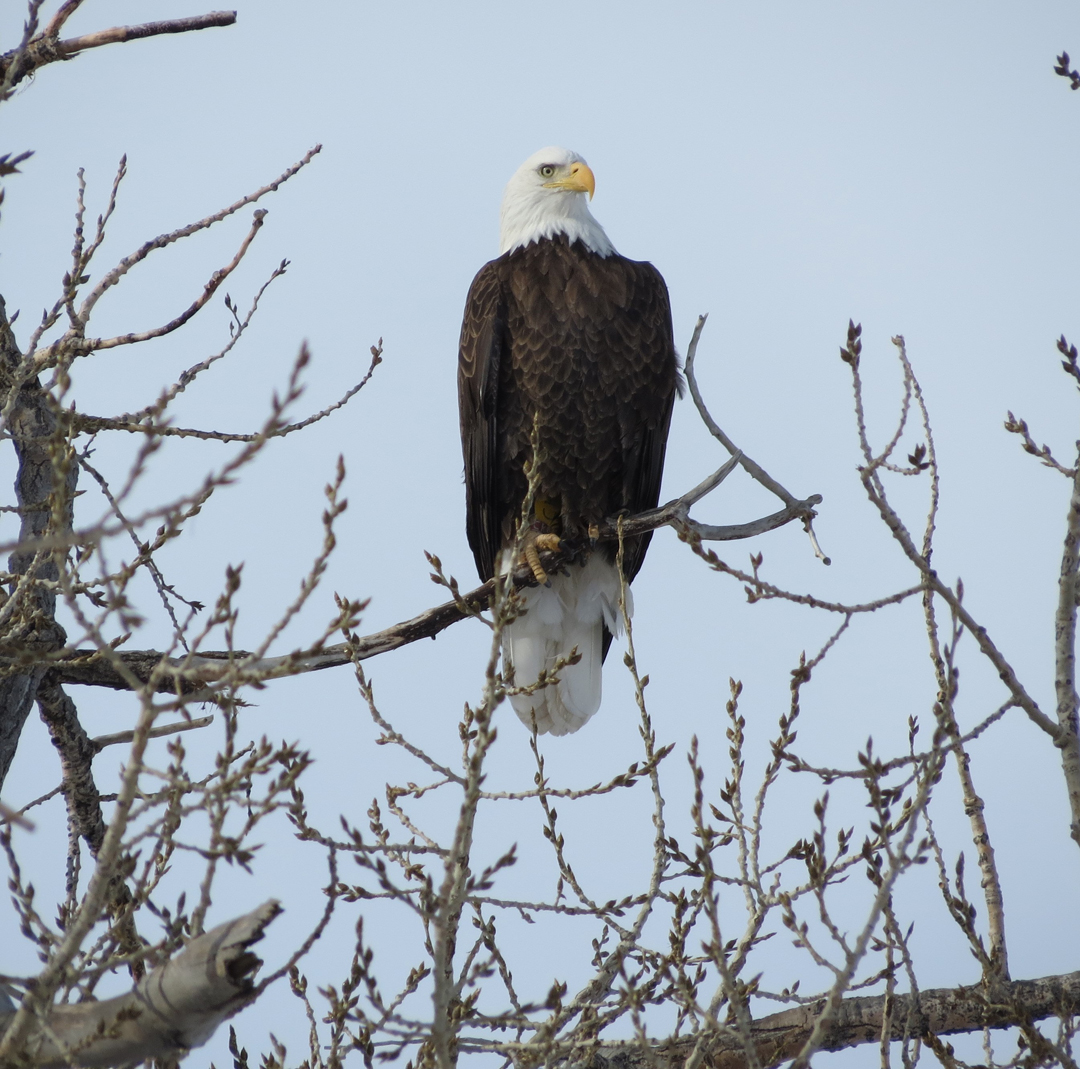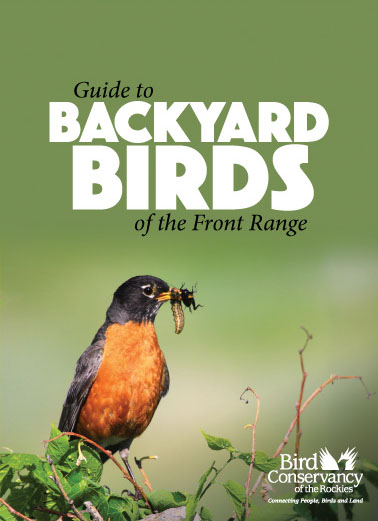Flowers are blooming, birds are singing and kids are learning! The Environmental Learning Center (ELC) at Bird Conservancy of the Rockies has become a place of respite and refueling for both people and nature. Situated on the northwest shore of Barr Lake State Park where the cottonwoods grow tall is our outdoor learning center that provides a unique space for all people to visit and learn about the local ecosystem and all it has to offer. Over the years, Bird Conservancy has transformed the space from an empty and weedy dirt lot to a thriving ecosystem where camp kids can run and play, students can learn about adaptations on a school field trip, and visitors can learn how to garden for birds in their own backyards.
- Campers in the weed patch before renovations
- The ELC before adding native plants and grasses
More recently we have been tending the native gardens and ensuring they become well established. Perennials like Desert Four O’clocks, Soapweed Yucca, Prairie Coneflower and Rocky Mountain Columbine and trees and shrubs like Mountain Mahogany, Pinyon Pine, Three Leaf Sumac and Golden Currant are all thriving in the demonstration gardens. Rocky Mountain Penstemon, Spider Wort and Yarrow are providing brilliant blooms in the pollinator garden and Sage, Chocolate Flowers and Sunflowers are delighting the senses in the sensory garden. Buffalo and Blue Grama grasses are coming up all over and work hard every summer to outcompete the weeds and non-native grasses, slowly but surely, they are winning back their landscape. Every year it is a treat to see what will grow strong and how it will fill in the spaces.
- Rocky Mountain Columbine
- The new native grass at the ELC
- Soapweed Yucca
When you visit the ELC you will be able to experience first hand our riparian/wetland and prairie/grassland ecosystems. You can stroll through tall cottonwoods in our sensory garden listening to birds and other wildlife go about their daily activities. It is an excellent place to slow down, have a seat and feel the warmth of the sun on your face or stop and literally smell the flowers or let snowflakes fall on your tongue. Or, you can visit our lower meadow surrounded by towering trees and filled with common milkweed and fluttering butterflies. Bald Eagles will frequently spend a winter afternoon perching in the trees around the meadow.
- The Demonstration Gardens at our Environmental Learning Center in bloom.
- A Bald Eagle perches in a tree near Barr Lake during the count. Photo by Ann Troth.
A visit to the prairie in summer will introduce you to prairie flowers, grasses and a melody from the nearby Western Meadowlarks. A pair of Swainson’s hawks also call the prairie home and can often be seen swooping over the landscape in search of their next meal. In the winter, the prairie is frequently visited by Bald Eagles and Red-tailed Hawks. And all year-round you will be welcomed by a booming prairie dog town chirping in alarm at your arrival!
Our work at the ELC has brought our Front Range Guide to Backyard Birds to life and highlights four ecosystems that occur naturally on the Front Range so that visitors from different parts of town can see how native plants can thrive in their landscapes. We want visitors to understand how using native plants increases biodiversity and is a win-win for birds and people alike. When you use a native plant in your yard you are inviting an array of native insects for birds to feast on. Non-native plants typically do not support insect populations in the same quantities as native so if you want to attract the greatest number of creatures including birds you should go native!
- A bee pollinating a native plant.
This year we have installed all new signage in English and Spanish on the grounds to help educate visitors on the importance of bird friendly habitats, what birds and other wildlife they can expect to see in the area, simple ways to help birds thrive in any habitat, and how to welcome birds to their own spaces. We also have information on the importance of native plant communities and how to use them in landscaping to invite winged visitors to their yards and neighborhoods.
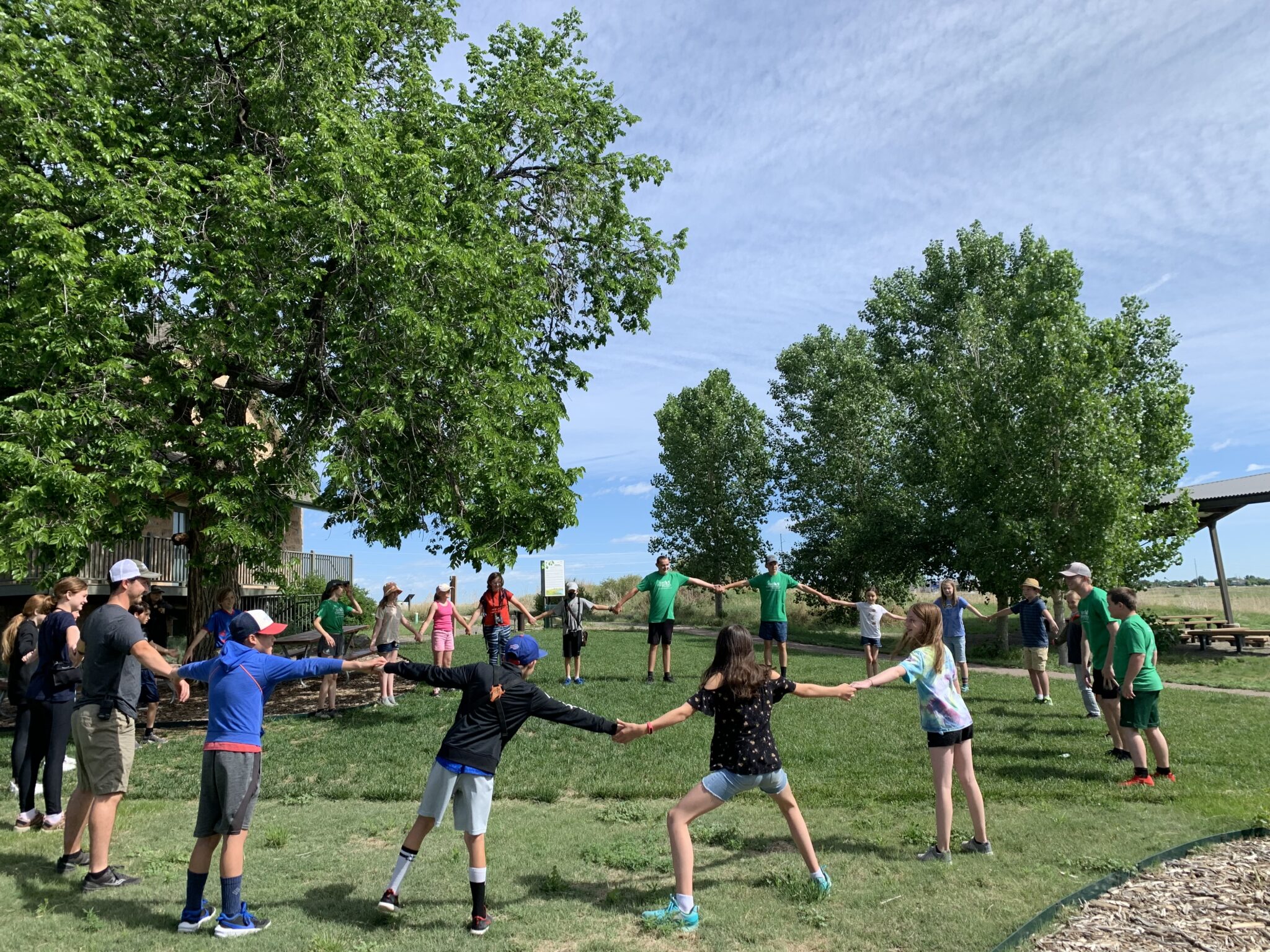
Campers enjoying the new and improved ELC
Over time we will continue making improvements and maintaining the space to be a welcoming oasis in the city for people and wildlife. We invite you to come out and visit the ELC and engage all of your senses in a safe and welcoming space! We hope you will leave inspired to take simple steps to help birds in your neck of the woods!
Sherry Nickolaus is the Education Director for Bird Conservancy. Sherry was vital in securing grants, designing the layout, picking out the plants, implementing the design and being the caretaker of the Environmental Learning Center.


